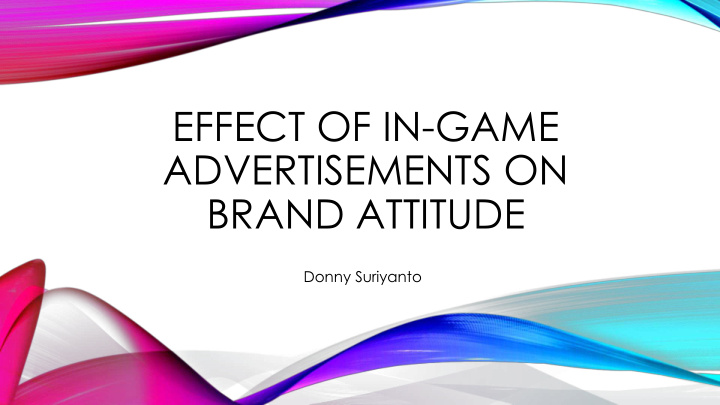



EFFECT OF IN-GAME ADVERTISEMENTS ON BRAND ATTITUDE Donny Suriyanto
BACKGROUND INFORMATION
COMPARISON OF REAL LIFE & IN-GAME ADVERTISEMENT
EXPERIMENTAL DESIGN The Usual Method:
PROCESSING OF DATA
REAL LIFE APPLICATION Companies can decide whether to invest their money into placing their products inside the game Must consider the additional Must consider the additional revenue that can be brought cost needed to place the in by the advertisements advertisement into the game
RESULTS The table shows the results of the study. It shows the fixation duration for each advertisement • that appeared in the game. It also shows whether the participants were able to recall or recognise the brand that appeared. The results show that the recall and recognition rate of In-Game Advertisements is relatively • low. The results may be affected by brand familiarity as well as the more familiar a person is with the • brand, the easier it is for them to recall and recognise the brand.
LIMITATIONS & FUTURE IMPROVEMENTS Limitations: • Overlap of AOIs with the car in the Formula 1 Racing Game • Lack of processed data Future Improvements: • Using different types of games • Obtaining a larger sample size • Allow the players to play the game for a longer duration
CONCLUSION • Participants were able to recall and recognise an average of 1.5 advertisements. • The data does not support the hypothesis as the data shows that there are no correlation between fixation duration and recall and recognition rate. However, this conclusion may be due to the small sample size of this study. • In – Game Advertisements may prove to be an ineffective method to affect one’s attitude towards a brand, if done in a short period of time.
Recommend
More recommend